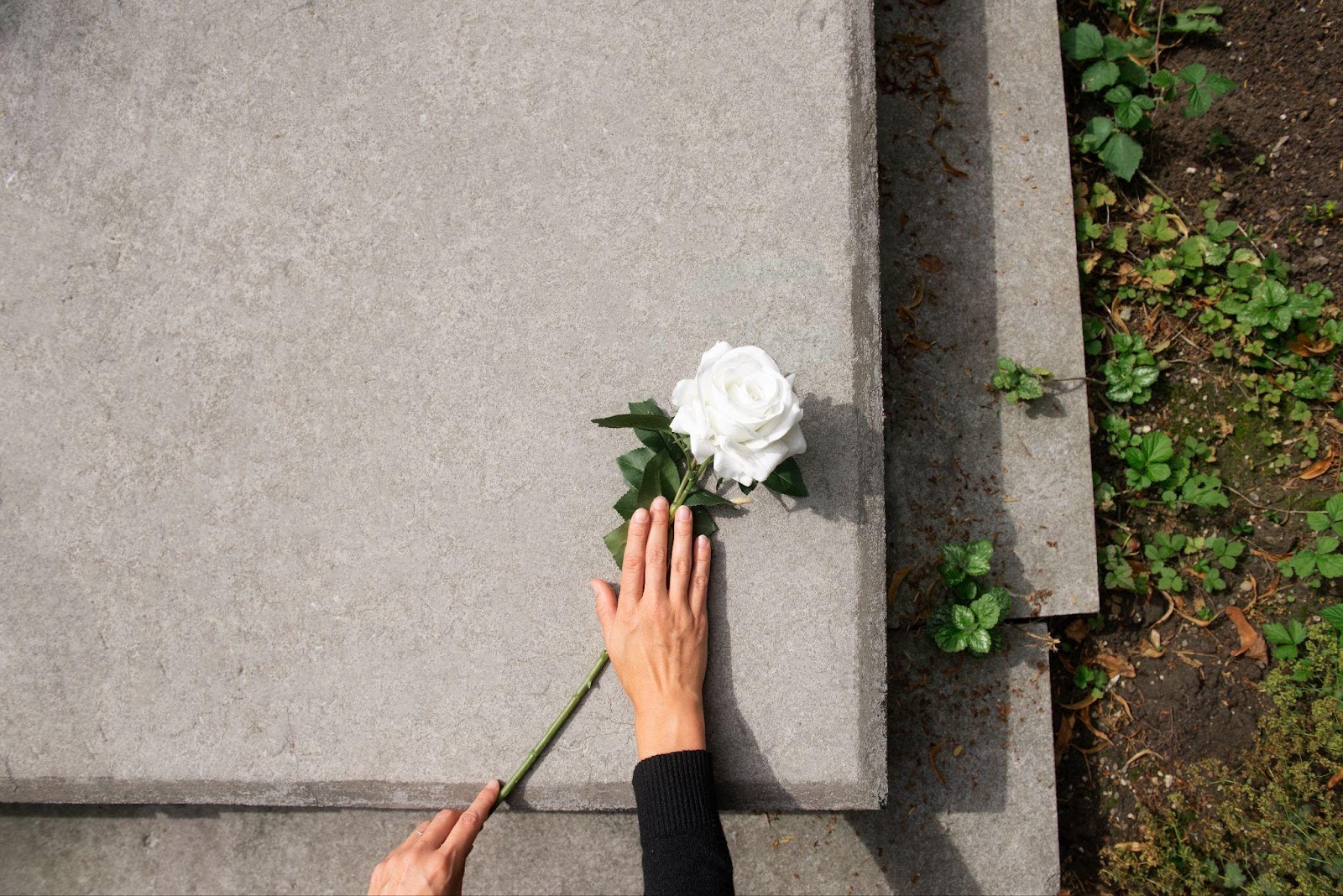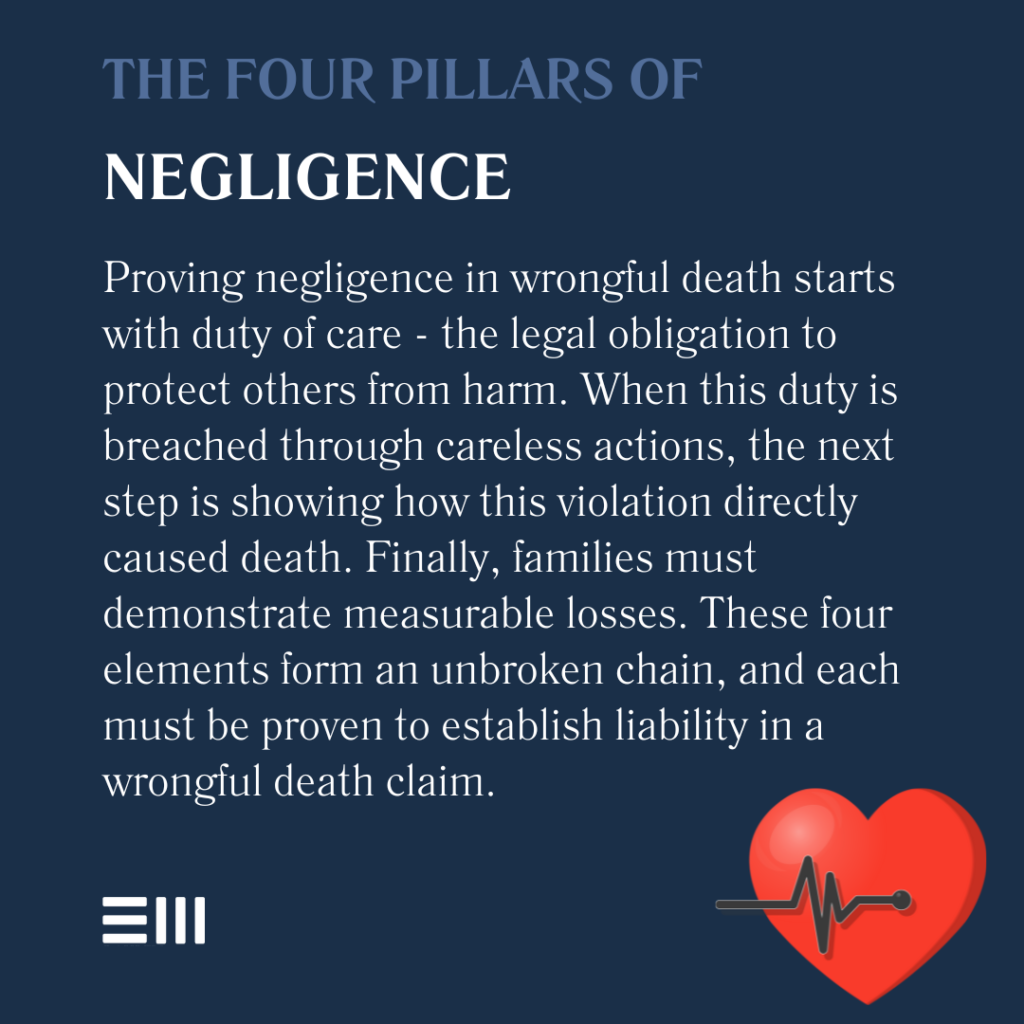
In the time it takes to read this sentence, someone in the United States has lost their life to a preventable injury.
These aren’t just numbers—they represent parents who won’t see their children graduate, spouses who leave empty seats at dinner tables, and children who will grow up without a parent’s guidance.
When preventable negligence shatters families every two minutes across America, understanding how to prove fault becomes more than a legal process—it’s the first step toward preventing the next tragedy and holding those responsible accountable.
Understanding the Burden of Proof
Before diving into specific elements, it’s important to recognize that proving wrongful death requires clear evidence and expert testimony.
The legal system sets specific standards that must be met to establish liability, and understanding these standards is crucial for building a strong case.
Key elements that must be proven include:
- A duty of care existed between the defendant and the deceased;
- The defendant breached their duty of care;
- The breach directly caused the death; and
- Measurable damages resulted from the death.
The burden of proof in civil cases requires demonstrating these elements by a “preponderance of the evidence,” meaning it’s more likely than not that the defendant’s actions caused the death. This standard differs from criminal cases, which require proof beyond a reasonable doubt.
Successfully demonstrating these elements requires thorough documentation, expert analysis, and skilled legal representation.
Elements of Negligence in Wrongful Death Cases
Understanding the core components of negligence helps build a stronger case. Each element must be proven through evidence and expert testimony, and their interrelation creates the foundation for establishing liability.
Key aspects of negligence include:
- Establishing the standard of care in the specific situation;
- Demonstrating how the defendant failed to meet this standard;
- Proving the direct link between the negligent action and death;
- Documenting all resulting damages and losses;
- Identifying all potentially liable parties;
- Establishing the timeline of events; and
- Demonstrating foreseeability of harm.
The strength of a wrongful death claim often depends on how clearly these elements can be established and connected. Evidence must show not only that the defendant’s actions were negligent but also that this negligence directly led to the death in question.
Every successful wrongful death claim carefully addresses each of these elements with supporting evidence and expert analysis.

Building Evidence for Causation
Strong evidence forms the backbone of proving causation in wrongful death claims. Gathering and preserving evidence early helps establish the critical link between negligence and death.
Time is often critical in this process, as evidence can deteriorate or become more difficult to obtain as time passes.
Essential types of evidence include:
- Medical records and autopsy reports;
- Expert witness testimony;
- Accident scene documentation;
- Security camera footage;
- Witness statements;
- Police and incident reports;
- Electronic data and communications;
- Maintenance records;
- Training documentation;
- Safety protocols and procedures;
- Communication records; and
- Equipment inspection reports.
Each piece of evidence serves to strengthen the causal link between the defendant’s actions and the resulting death. Physical evidence, documentary evidence, and testimony must work together to create a complete picture of liability.
A methodical approach to evidence collection strengthens the foundation for proving causation.
Common Challenges in Proving Negligence
Understanding potential obstacles helps in preparing a stronger case. Many wrongful death claims face similar challenges that must be strategically addressed to build a compelling case for liability.
Frequent challenges include:
- Missing or incomplete evidence;
- Conflicting witness accounts;
- Multiple potentially liable parties;
- Pre-existing medical conditions;
- Complex chains of causation;
- Statute of limitations issues;
- Disputed facts about the incident;
- Questions about comparative negligence;
- Gaps in documentation;
- Reliability of expert testimony;
- Insurance coverage disputes; and
- Corporate liability shields.
Early identification of these potential challenges allows for better preparation and more effective responses. Working with experienced legal counsel helps anticipate and address these issues proactively.
Working With Expert Witnesses
Expert witnesses play a crucial role in establishing negligence and causation. Their specialized knowledge helps explain complex concepts to judges and juries, making technical information accessible and meaningful in the context of the case.
Types of expert witnesses often needed:
- Medical experts;
- Accident reconstruction specialists;
- Industry safety experts;
- Economic loss analysts;
- Life care planning specialists;
- Mental health professionals;
- Occupational safety experts;
- Engineering specialists;
- Forensic accountants;
- Human factors experts;
- Industry standard experts; and
- Quality assurance specialists.
Each expert brings unique insights that strengthen different aspects of the case. Their testimony must be both scientifically sound and comprehensible to laypeople, bridging the gap between technical evidence and legal requirements.

Frequently Asked Questions About Wrongful Death Claims in Alabama
Families often have many questions when pursuing a wrongful death claim.
Here are answers to some of the most common concerns we encounter.
How Long Do I Have to File a Wrongful Death Claim in Alabama?
In Alabama, the statute of limitations for wrongful death claims is generally two years from the date of death. However, certain circumstances may affect this timeframe, and exceptions might apply in specific situations.
Who Can File a Wrongful Death Claim?
In Alabama, only the personal representative of the deceased person’s estate has the legal authority to file a wrongful death claim. This differs from many other states and requires careful attention to legal requirements.
What Types of Damages Can Be Recovered?
Alabama law is unique in that it only allows punitive damages in wrongful death cases, meant to punish wrongdoing and prevent similar conduct. Understanding this distinction is crucial for managing expectations and building an appropriate case strategy.
How Long Does a Wrongful Death Case Usually Take?
While each case is unique, wrongful death cases typically take between one to three years to resolve, depending on complexity and whether they go to trial. Factors affecting timeline include evidence gathering, expert availability, and court schedules.
What Evidence Is Most Important for My Case?
The most crucial evidence typically includes medical records, expert testimony, accident reports, and documentation of the defendant’s negligent conduct. Early preservation of evidence often proves critical to case success.
How Are Settlement Values Determined?
Settlement values depend on multiple factors including the strength of evidence, the defendant’s conduct, and the impact on surviving family members. Each case is evaluated individually based on its specific circumstances.
Protecting Your Rights and Securing Justice
Wrongful death claims require careful attention to detail and strategic legal planning.
The right approach can make a significant difference in the outcome of your case and help ensure full accountability for negligent conduct.
Key steps to protect your rights include:
- Documenting all relevant evidence;
- Following medical and legal advice;
- Meeting all filing deadlines;
- Maintaining careful records;
- Avoiding social media discussions;
- Working closely with legal counsel;
- Preserving all communication;
- Following proper legal procedures;
- Maintaining confidentiality; and
- Keeping detailed timeline records.
Taking these steps helps preserve your rights and strengthens your case for justice. Early action often proves crucial in building a strong foundation for your claim.
Take the Next Step Toward Justice
The loss of a loved one leaves an irreplaceable void, but you don’t have to navigate the legal process alone.
Our experienced team stands ready to help you seek accountability and honor your loved one’s memory through effective legal action.
Contact us today for a confidential consultation to discuss your case and understand your options. Together, we can work to prevent similar tragedies and protect other families from experiencing such profound loss.
Can't find what you're looking for? Search our site below.










